The Slime series is a spinoff series of games from Dragon Quest featuring its Slime character. Three games have been released, the second of which, Dragon Quest Heroes: Rocket Slime, has been released in North America.

Super Mario 64 DS is a 2004 platform game developed and published by Nintendo for the Nintendo DS. It was a launch game for the DS. Super Mario 64 DS is a remake of the 1996 Nintendo 64 game Super Mario 64, with new graphics, characters, collectibles, a multiplayer mode, and several extra minigames. As with the original, the plot centers on rescuing Princess Peach from Bowser. Unlike the original, Yoshi is the first playable character, with Mario, Luigi, and Wario being unlockable characters in early phases of the game.
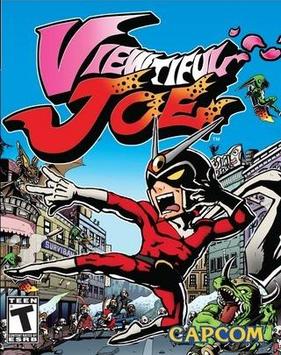
Viewtiful Joe is a side-scrolling beat 'em up video game developed by Team Viewtiful for the GameCube. It was originally released in 2003 as a part of the Capcom Five, under director Hideki Kamiya and producer Atsushi Inaba. The game was later ported to the PlayStation 2 by the same design team under the name Clover Studio, subtitled in Japan Aratanaru Kibō. The game's story concerns Joe, an avid movie-goer whose girlfriend Silvia is kidnapped during a film starring Joe's favorite superhero, Captain Blue. Joe is shortly thereafter thrust into Movieland, where Silvia is taken by the villainous group known as Jadow. After accepting a special V-Watch from Captain Blue, Joe transforms into the tokusatsu-style persona "Viewtiful Joe" and sets out to rescue her.
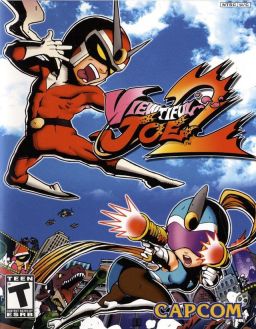
Viewtiful Joe 2, known in Japan as Viewtiful Joe 2: Secret of the Black Film, is a video game and sequel to Viewtiful Joe. The game was developed by Clover Studio and published by Capcom in 2004 for the GameCube and PlayStation 2. The game's story begins where the original Viewtiful Joe left off, with the beginning of an alien invasion of Movieland by a villainous organization called "Gedow". The group is led by an unseen being known as the "Black Emperor", whose proclaims his goal to collect the special Rainbow Oscars, seven statuettes which contain the "power of the happy ending". Straight from their previous adventure, superhero Viewtiful Joe and his girlfriend Sexy Silvia quickly charge themselves with stopping Gedow's evil plans.
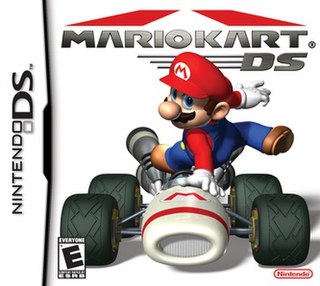
Mario Kart DS is a 2005 kart racing video game developed and published by Nintendo for the Nintendo DS handheld game console. It was released in November 2005 in North America, Europe, and Australia, and on December 8, 2005, in Japan. The game was re-released for the Wii U's Virtual Console in North America and PAL regions in April 2015 and in Japan in May 2016. The game is the fifth main entry in the Mario Kart series of video games, and the first to be playable via the Nintendo Wi-Fi Connection online service. Like other games in the series, Mario Kart DS features characters from the Mario series and pits them against each other as they race in karts on tracks based on locations in the Mario series.

Nintendogs is a real-time pet simulation video game developed and published by Nintendo for the Nintendo DS handheld video game console. It was released in Japan, and was later released in: North America, Australia, New Zealand, Europe and other regions. It was originally released in three different versions: Dachshund & Friends, Lab & Friends and Chihuahua & Friends. It has been re-released twice, first as a bundled release with a special edition Nintendo DS with a new version called Nintendogs: Best Friends and later as Nintendogs: Dalmatian & Friends.

Yoshi Touch & Go, known in Japan as Catch! Touch! Yoshi!, is a video game that was developed and published by Nintendo for the Nintendo DS. It debuted in Japan on January 27, 2005, in North America on March 14, 2005, in Europe on May 6, 2005, and in Australia on May 19, 2005. As of August 2007, the game sold 197,337 copies in Japan. Yoshi Touch & Go was produced by Takashi Tezuka and directed by Hiroyuki Kimura. The game was released on the Wii U Virtual Console in 2015.
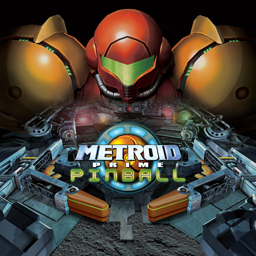
Metroid Prime Pinball is a pinball video game themed after the Metroid series. The game uses the graphical style and various story elements from Metroid Prime. It was developed by Fuse Games and published by Nintendo for the Nintendo DS in North America and Australia in 2005, in Japan in 2006, and in Europe in 2007. Metroid Prime Pinball uses the basic mechanics of pinball, along with typical pinball items. New mechanics are introduced, such as wall jumping and the ability to fire weapons. The Nintendo DS's touchscreen can be nudged with a finger to alter the pinball's trajectory while in motion.
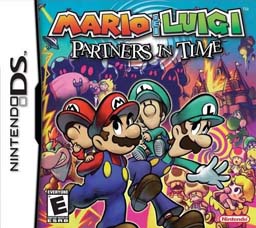
Mario & Luigi: Partners in Time is a role-playing video game developed by AlphaDream and published by Nintendo for the Nintendo DS handheld game console in late 2005. It is the second game in the Mario & Luigi series, and is the prequel/sequel to the 2003 Game Boy Advance game Mario & Luigi: Superstar Saga. The game was later re-released for the Wii U as a Virtual Console title in 2015, available for purchase from the Nintendo eShop.
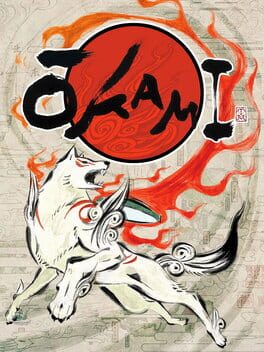
Ōkami is an action-adventure video game developed by Clover Studio and published by Capcom. It was released for PlayStation 2 in 2006 in Japan and North America, and in 2007 in Europe and Australia. After the closure of Clover Studio a few months after the release, a port for Wii was developed by Ready at Dawn, Tose, and Capcom, and released in 2008.
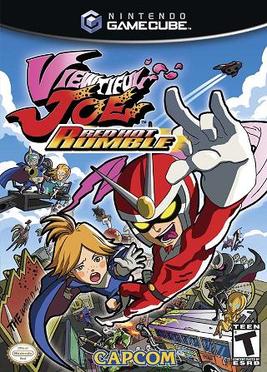
Viewtiful Joe: Red Hot Rumble, known in Japan as Viewtiful Joe: Battle Carnival, is a video game for the GameCube and the PlayStation Portable. It is a slightly mission-based platform fighter/beat 'em up somewhat similar in style to Super Smash Bros. Melee and Power Stone, though it uses a modified engine from the previous games, featuring characters and powers from the Viewtiful Joe games and anime.

The Capcom Five are five video games that were unveiled by Capcom in late 2002 and published from March 2003. At a time when Nintendo's GameCube console had failed to capture market share, Capcom announced five new GameCube titles with the apparent goal of boosting hardware sales and demonstrating third-party developer support. Capcom USA followed up with confirmation that they would be exclusive to the GameCube. The five games were P.N.03, a futuristic third-person shooter; Viewtiful Joe, a side-scrolling action-platformer; Dead Phoenix, a shoot 'em up; Resident Evil 4, a survival horror third-person shooter; and Killer7, an action-adventure game with first-person shooter elements. Though not directly related to each other, they were all overseen by Resident Evil director Shinji Mikami and, except Killer7, developed by Capcom's Production Studio 4. Capcom USA later clarified that only Resident Evil 4 was intended to be exclusive; the initial announcement was due to a miscommunication with their parent company.

The Legend of Zelda: Phantom Hourglass is a 2007 action-adventure game developed and published by Nintendo for the Nintendo DS handheld game console. It is the fourteenth installment in The Legend of Zelda series and the direct sequel to the 2002 GameCube title The Wind Waker. Phantom Hourglass was released worldwide in 2007, with the exception of South Korea in April 2008. The game was re-released for the Wii U via the Virtual Console service in the PAL region in November 2015, in North America in May 2016, and in Japan in August.
Hideki Kamiya is a Japanese video game designer and director. He began his career in 1994 with Capcom, where he directed Resident Evil 2 (1998), Devil May Cry (2001), Viewtiful Joe (2003), and Ōkami (2006). From 2004 to 2006, he worked for the Capcom subsidiary Clover Studio.
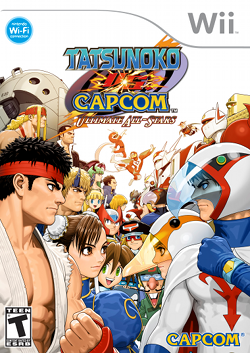
Tatsunoko vs. Capcom: Ultimate All-Stars is a crossover fighting game developed by Eighting and published by Capcom. The game features characters from both Capcom's video game franchises and various anime series produced by Tatsunoko Production. It was originally released in Japan for arcades and the Wii video game console in December 2008 as Tatsunoko vs. Capcom: Cross Generation of Heroes. Following high demand from international fans, Capcom worked with Tatsunoko to resolve international licensing issues and a second version, Ultimate All-Stars, was released for the Wii in North America, Japan, and Europe in January 2010, featuring additional characters and online multiplayer.

Ōkamiden, known in Japan as Ōkamiden: Chiisaki Taiyō, is an action-adventure video game published by Capcom for the Nintendo DS handheld game console. It is a spiritual successor, rather than a sequel, to Ōkami, a game released originally for the PlayStation 2 and later ported first to the Wii, then to other platforms.

Mega Man Zero Collection is a compilation of all four Mega Man Zero video games, which were originally released for the Game Boy Advance between 2002 and 2005. It was developed by Inti Creates and published by Capcom, and was made available worldwide in June 2010 for the Nintendo DS. The collection contains new features such as a beginner-friendly "Easy Scenario" that grants power-up items and abilities from the beginning of each game, as well as unlockable character art and the ability to display artwork on the Nintendo DS's bottom screen as the game is played. A similar compilation, Mega Man Zero/ZX Legacy Collection, was released in 2020.

Super Street Fighter IV: 3D Edition is a fighting video game developed and published by Capcom for the Nintendo 3DS handheld game console. It was released as a launch game in all continents, but in Japan first on 26 February 2011. It is a port of the console game Super Street Fighter IV. The game has sold 1.3 million units worldwide for 3DS.

Viewtiful Joe is a side scrolling beat 'em up video game franchise created by Japanese game designer Hideki Kamiya. It is primarily developed and published by Capcom and its subsidiary Clover Studio.


















